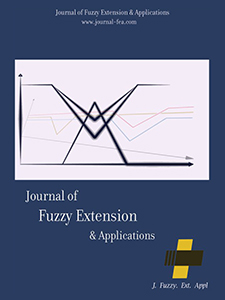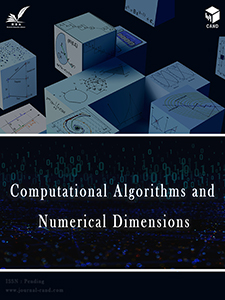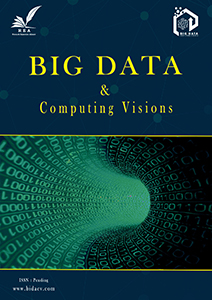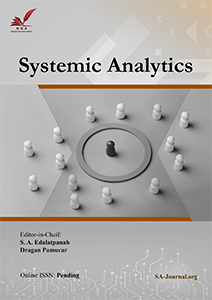The Study of Working Patterns in the Gig Economy
Keywords:
Gig economy, Job characteristic model, Job pattern, Motivation potential index, Job satisfactionAbstract
The economy and technology have changed normal work modes in recent years. A new gig economy has been catalyzed, and job opportunities have increased rapidly. Some constant entrepreneurs take advantage of the gig economy and the characteristics of the sharing platform to create new business models. More and more workers want to earn income while achieving a better quality of life and thus become gig economy workers. In 2016, McKinsey Global Institute presented the first study related to the gig economy, which showed that workers in the gig economy are slightly more satisfied than those in traditional employment. Therefore, the purpose of this study is threefold: (1) to explore the factors affecting job satisfaction in the gig economy; (2) to explore the applicability of the Job Characteristics Model (JCM) in the gig economy; and (3) to explore the effects of the job patterns affecting the gig economy on job satisfaction. The study used a quantitative questionnaire to examine the impact of the JCM on job satisfaction. This study was conducted using a quantitative questionnaire survey. The questionnaire was divided into four parts: demographic variables, job characteristic models, job patterns in the gig economy, and job satisfaction. Regression analyses were conducted to verify the effects of job-distinct models and job patterns on the gig economy. The study results showed that the JCM theory is generally applied to the gig economy. Still, the effect of "task importance" on "job satisfaction" was not significant. In the gig economy, "substitutability" and "uncertainty" have substantial adverse effects on "job satisfaction," while "flexibility" and "degree of freedom" have significant positive impacts on "job satisfaction."
References
[1] Chang, Y. ., & Chien, H. . (2020). Current situation of labor service provision in the gig economy. Institute of Labor and Occupational Safety and Health.
[2] Mulcahy, D. (2016). The gig economy: the complete guide to getting better work, taking more time off, and financing the life you want. Amacom.
[3] McGovern, M., & Schnaubelt, T. (2017). Thriving in the gig economy: how to capitalize and compete in the new world of work. Red Wheel/Weiser.
[4] Huang, S. S. (2018). A case study of brand management of we-media (Master Thesis, Shih Chien University). https://www.researchgate.net/publication/319598468_Case_Study_of_Online_Brand_Management
[5] Petriglieri, G., Ashford, S., & Wrzesniewski, A. (2018). Four major links that freelancers must manage to become winners in the gig economy, thriving in the gig economy. Harvard Business Review.
[6] Manyika, J., Lund, S., Bughin, J., Robinson, K., Mischke, J., & Mahajan, D. (2016). Independent-work-choice-necessity-and-the-gig-economy. McKinsey Global Institute.
[7] Huws, U., & Joyce, S. (2016). Character of Austria’s ‘gig economy’revealed for the first time. UNI Europa.
[8] Heeks, R. (2017). Decent work and the digital gig economy: a developing country perspective on employment impacts and standards in online outsourcing, crowdwork, etc. http://www.gdi.manchester.ac.uk/research/publications/di/
[9] Lepanjuuri, K., Wishart, R., & Cornick, P. (2018). The characteristics of those in the gig economy. https://apo.org.au/node/244361
[10] Balaram, B., Warden, J., & Wallace-Stephens, F. (2017). Good gigs: A fairer future for the UK’s gig economy. https://www.voced.edu.au/content/ngv:83166
[11] Rosenblat, A., Levy, K. E. C., Barocas, S., & Hwang, T. (2017). Discriminating tastes: uber’s customer ratings as vehicles for workplace discrimination. Policy and internet, 9(3), 256–279. DOI:10.1002/poi3.153
[12] Martinez Alvarez, V. M., Barrios Vargas, J. E., & Foa Torres, L. E. F. (2018). Non-Hermitian robust edge states in one dimension: Anomalous localization and eigenspace condensation at exceptional points. Physical review B, 97(12), 121401. DOI:10.1103/PhysRevB.97.121401
[13] Hackman, J. R., & Oldham, G. R. (1975). Development of the job diagnostic survey. Journal of applied psychology, 60(2), 159–170. DOI:10.1037/h0076546
[14] Lin, J. . (2010). Job satisfaction, organizational commitment and turnover intention: A comparison between elementary school teachers and other occupations. Educational practice and research, 23(1), 1–30.
[15] Lai, T. L. (2010). Job characteristics, organizational justice, and job satisfaction of university staff (Master Thesis, National Dong Hwa University). https://dspace.uib.es/xmlui/handle/11201/146275
[16] Chiu, L. J. (2006). A study on personal attributes, work characteristics, and job satisfactions of internal auditors – achievement motivation as intervening variable (Mater Thesis, National Sun Yat-sen University). https://ouci.dntb.gov.ua/en/works/42YyJ267/
[17] Chen, W. (2006). A study of the relationship among personality traits, work characteristics and job satisfaction: a case of international news editors (Master Thesis, National Chengchi University). https://www.researchgate.net/publication/305396292_The_Relationship_between_the_Five-factor_Personality_Traits_of_Workers_and_their_Job_Satisfaction_S_Study_on_Five_Star_Hotels_in_Alanya
[18] Lin, C. J. (2011). A study of the relationship among leadership, job characteristic and job satisfaction of attending physician (Mater Thesis, Kaohsiung Medical University). https://www.ncbi.nlm.nih.gov/pmc/articles/PMC9252515/
[19] Faraji, O., Pourreza, A., Hosseini, M., Arab, M., Akbari, F., & Back, A. (2008). Role and effect of the job characteristic model (JCM) on job satisfaction. Journal of school of public health & institute of public health research, 6(2), 31–39.
[20] Caza, B. B., Ashford, S. J., Reid, E., & McCallum, D. (2019). Are you ready to go freelance. Harvard business review, 2, 122–126.
[21] Barney, J. (1991). Firm resources and sustained competitive advantage. Journal of management, 17(1), 99–120.
[22] Hickson, D. J., Hinings, C. R., Lee, C. A., Schneck, R. E., & Pennings, J. M. (1971). A Strategic Contingencies’ theory of intraorganizational power. Administrative science quarterly, 16(2), 216. DOI:10.2307/2391831
[23] Chen, I. . (2014). The effect of work characteristics on job insecurity: the mediating role of employability and substitutability (Master Thesis, National Sun Yat-sen University). https://www.researchgate.net/publication/282085895_The_mediating_role_of_perceived_employability_in_the_relationship_between_core_self-evaluations_and_job_search_behaviour
[24] Gustavsson, S.-O. (1984). Flexibility and productivity in complex production processes. The international journal of production research, 22(5), 801–808.
[25] Poole, M., & Warner, M. (1998). The IEBM handbook of human resource management. International Thomson Business Press London.
[26] Blyton, P. (1996). Workforce flexibility. In Handbook of human resource management (pp. 630-674). Blackwell Oxford.
[27] Jan Eppink, D. (1978). Planning for strategic flexibility. Long range planning, 11(4), 9–15. DOI:10.1016/0024-6301(78)90002-X
[28] Sethi, A. K., & Sethi, S. P. (1990). Flexibility in manufacturing: A survey. International journal of flexible manufacturing systems, 2(4), 289–328. DOI:10.1007/BF00186471
[29] Colclough, G., & Tolbert, C. M. (1992). Work in the fast lane: Flexibility, divisions of labor, and inequality in high-tech industries. SUNY Press.
[30] Brewer, A. M. (1998). Work design, felxible work arrangements and travel behaviour: policy implications. Transport policy, 5(2), 93–101. DOI:10.1016/S0967-070X(98)00003-1
[31] Leana, C. R., & Feldman, D. C. (1992). Coping with job loss: How individuals, organizations, and communities respond to layoffs. Lexington Books.
[32] Ashford, S. J., Lee, C., & Bobko, P. (1989). Content, cause, and consequences of job insecurity: a theory-based measure and substantive test. Academy of management journal, 32(4), 803–829. DOI:10.5465/256569
[33] Wang, M. C. (2018). The influence of the personality characteristic on job satisfaction, organization commitment and turnover tendency among the different generation employees (Master Thesis, National Sun Yat-sen University). https://www.researchgate.net/publication/273554586_
[34] Lai, H. C. (2005). An empirical study of relationship among the perception of anticipated uncertainty, organizational communication, trust and work attitude ─ the case of chunghwa telecom southern branch (Master Thesis, National Cheng Kung University). https://www.mdpi.com/2071-1050/10/3/864
[35] Wu, C. T. (2009). The effect of leadership and membership exchange, organizational justice, organization-based self-esteem, and job satisfaction on organizational citizenship behavior in schools. Educational policy forum, 12(1), 141–161.
[36] Hsieh, W. C. (2009). Educational administration. Higher Education Taipei.
[37] Hsiao, H. C. (1999). Job characteristics and leadership patterns as determinants of job satisfaction and organizational commitment -evidence from hr staffs in local governmental organization (Mater Thesis, National Sun Yat-sen University). https://www.ijoi-online.org/attachments/article/53/Final Issue Vol 10 Num 1 July 2017 Section A.pdf
[38] Chen, Y. H. (1198). Research on the working satisfaction of the auditing personnel in our government department (Master Thesis, National Chung Hsing University). https://www.researchgate.net/publication/353028854_JOB_SATISFACTION_AMONG_AUDITORS
[39] Huang, C. L. (1994). A study on the relationship among personality traits, job stress, and job satisfaction of public servants in taipei city government (Mater Thesis, National Chung Hsing University). https://core.ac.uk/download/pdf/217400197.pdf
[40] Ellingson, J. E., Gruys, M. L., & Sackett, P. R. (1998). Factors related to the satisfaction and performance of temporary employees. Journal of applied psychology, 83(6), 913–921. DOI:10.1037/0021-9010.83.6.913
[41] Turner, A. N., & Lawrence, P. R. (1965). Industrial jobs and the worker: An investigation of response to task attributes. Harvard University.
[42] Hackman, J. R., & Lawler, E. E. (1971). Employee reactions to job characteristics. Journal of applied psychology, 55(3), 259–286. DOI:10.1037/h0031152
[43] Hsu, F. Y. (2020). The application of job design and job characteristics model on examining job satisfaction of long-term care nursing assistants (Mater Thesis, National Central University). https://www.researchgate.net/publication/7132047_
[44] Zhang, W., Bansback, N., Boonen, A., Severens, J. L., & Anis, A. H. (2012). Development of a composite questionnaire, the valuation of lost productivity, to value productivity losses: Application in rheumatoid arthritis. Value in health, 15(1), 46–54. DOI:10.1016/j.jval.2011.07.009
[45] Wang, N. Y. (2022). A study of individual work patterns of employees under the implementation of telecommuting system (Mater Thesis, National Sun Yat-sen University). https://www.researchgate.net/publication/227644764_
[46] Greenhalgh, L., & Rosenblatt, Z. (1984). Job insecurity: toward conceptual clarity. Academy of management review, 9(3), 438–448. DOI:10.5465/amr.1984.4279673
[47] Hui, C., & Lee, C. (2000). Moderating effects of organization-based self-esteem on organizational uncertainty: Employee response relationships. Journal of management, 26(2), 215–232.
[48] Wang, G. . (1985). The relationship among organizational communication, decision participation, personal traits, role stress, and work attitudes (Mater Thesis, National Chengchi University). https://www.researchgate.net/publication/247750619_
[49] Lu, R. . (1998). The effects of organizational change and job insecurity on organizational behavior outcomes (Master Thesis, National Taiwan University). https://www.researchgate.net/publication/211393225_
[50] Wu, C. C. (2001). An empirical study of the relationships between uncertain anticipated of organizational change and the employee’s working reactions (Master Thesis, National Defense University). https://www.researchgate.net/publication/43446832_
[51] Wu, J. (2003). A study on the relationship among employee perception and leadership style and organizational commitment, morale under the change of senior leaders - a case study of a local government (Master Thesis, National Chung Cheng Universit). https://www.researchgate.net/publication/236741932_
[52] DeVellis, R. F., & Thorpe, C. T. (2021). Scale development: Theory and applications. Sage Publications.
[53] Kaiser, H. F. & Rice, J. (1974). Little jiffy, mark IV. Psychometrika, 39(1), 31–36.

 Metrics
Metrics



